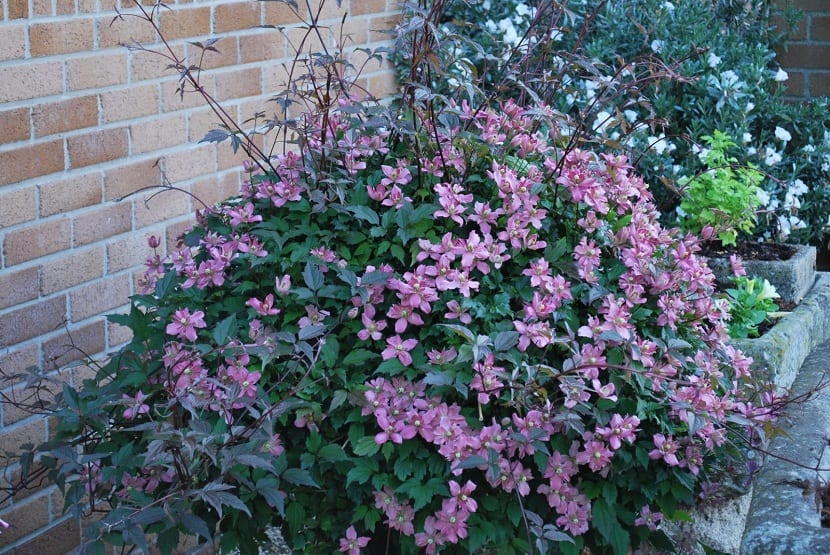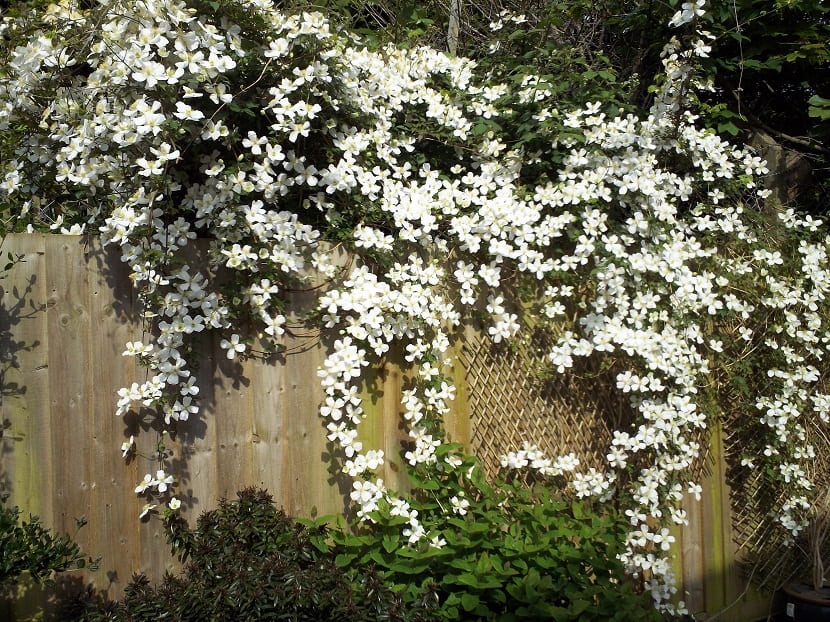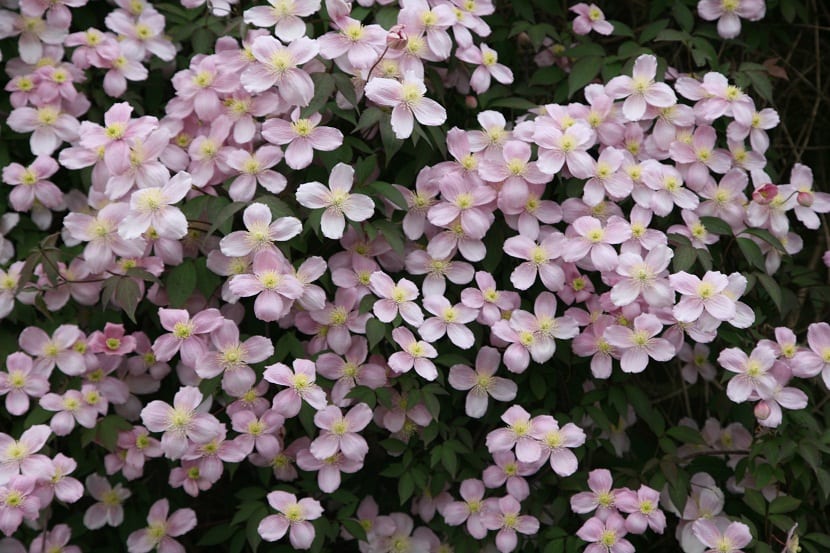
La clematis montana It is a plant that belongs to the Renonculaceae family. It is a highly appreciated climbing species, especially for its delicate and exuberant flowering. It is great to decorate gardens, patios and verandas, for this it must be placed in a position that allows it to climb, usually near a wall or protection designed for that purpose, or use it to decorate suggestive pergolas. It is a plant that does not demand specific care and that, due to its original blooms, guarantees a truly magnificent result.
Characteristics of the Clematis montana

This climbing plant has a dizzying growthHowever, to obtain its maximum growth it may take approximately 2 to 5 years. Its stems climb very easily, if it is allowed to develop in an environment free of disturbances, it can grow from 10 to 12 meters in length and about 3 or 4 meters wide.
As a consequence of the various existing hybridizations, the species has been divided into plants with large flowers and those with small flowers. Also its varieties can be deciduous and perennial. Its leaves are divided, oval and lanceolate, they have between 3 and 5 leaflets, their edges toothed, green in color and a length of approximately 10 cm.
Planting and care
You should plant in a soil with a smooth texture, well drained and rich in organic nutrients. Regarding the necessary PH, this should be slightly alkaline or neutral. Try to plant in early spring or fall. Due to its characteristics, it is appropriate to place it in full sun, near a wall protected from the wind, but with its roots slightly in the shade.
To facilitate your climbing, put something that serves as support, it can be a trellis or a mesh. Now, if you plan to grow it in pots, then place a layer of gravel on the bottom to facilitate drainage.
Arrival in spring and until the beginning of summer, the flowering of the clematis montana, a time when some species show abundant white flowers; while the flowering of the large-flowered species occurs in the summer and autumn seasons; others have up to two blooms, one in spring and then in fall. As usual the plant tolerates low temperaturesNot so, some of its hybrids do require special care, such as covering their roots during frost.
With regard to homemade fertilizersThese should be applied sparingly to avoid possible root rot. During growth the application of nitrogen fertilizers is recommended; Potassium-based fertilizers are better during the period of appearance of the boats and, after flowering, phosphate-based.
In principle maybe pruning is unnecessary, although you can do it to prevent excessive growth of the plant. Those that bloom during the summer season can be pruned once their flowering is over, the double-flowered species are pruned immediately after their flowers have withered. While those that bloom only in spring, you can wait the following winter for pruning.
Propagation
Propagation can be done through the semi-woody cutting procedure which is quite simple and safe. You can also resort directly to sowing. Sowing must be done in autumn, for this, you must place the seeds in containers with a mixture of sand and earth (remember that you prefer soft soils), then put it in a soft and cool environment, otherwise in a greenhouse while suckers develop.
The beginning of summer is the best time for sowing, because during this stage the risk of frost has already passed and the plants have enough time to strengthen themselves before the arrival of winter. Once summer arrives, you proceed to cut the branch of the Clematis stem, exactly below a knot and then you bury it in a pot with the same mixture of sand and soil. The cuttings can be planted in the winter. It is important to guide the plant with a stick at the beginning.
Diseases and pests
This plant is prone to being attacked by aphids that negatively affect the buds and flowers, especially the young ones. Another problem that afflicts the plant are the so-called snails that feed on its foliage and shoots. To combat this type of pest, there are a number of specific products on the market.
